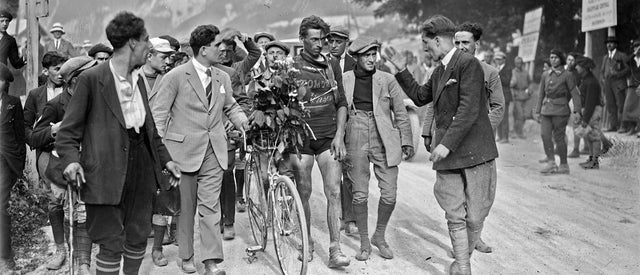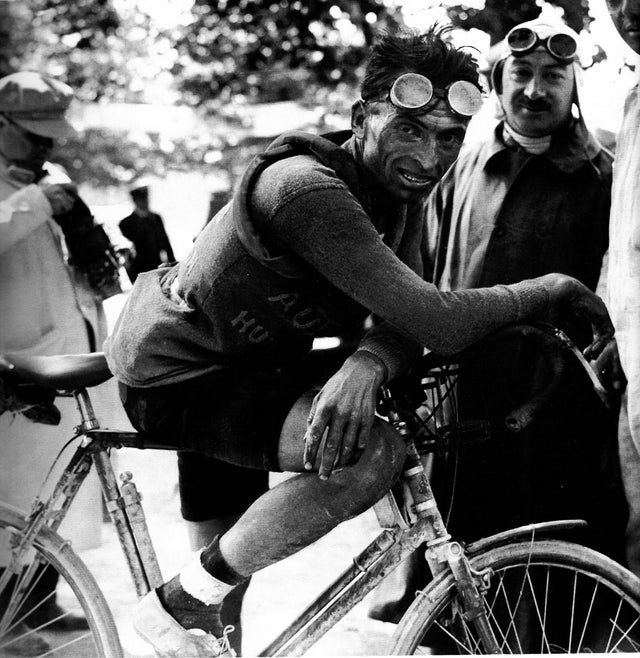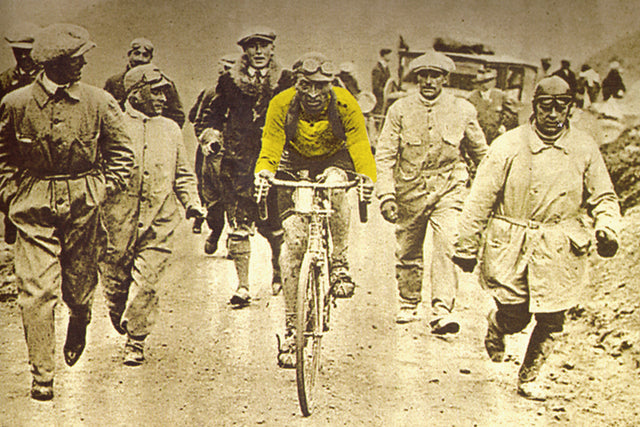OUR HISTORY
OTTAVIO BOTTECCHIA THE ITALIAN POWER
San Martino di Colle Umberto 1 August 1894 – Gemona del Friuli 15 June 1927.
The first Italian to win the Tour De France in 1924, wearing the yellow jersey from the first to the last stage, and to repeat the victory the following year. The Bricklayer from Friuli, Ottavio Bottecchia , has become an undisputed legend of cycling.
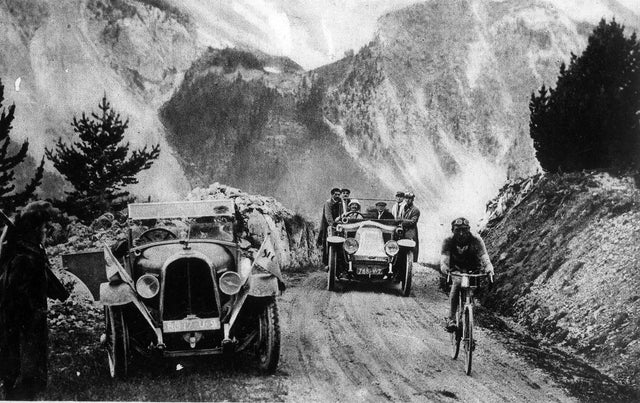
“He advances in strides, precise as the balance of a pendulum: he seems to be the only one who doesn't make efforts beyond his possibilities. He has sixteen minutes on the second place. But today he isn't singing.”
STORY OF A LEGEND
Ottavio Bottecchia, Italian legend of international cycling, was the most sensational revelation of the Tour de France. He makes history by being the first Italian athlete to win the Tour de France, wearing the legendary yellow jersey from the first to the last day and defending it at every stage.
Taciturn and obscure, without knowing a word of French and without ever having seen a street beyond the Alps, he proves to be a great champion.
The birth of a champion
Bottecchia was not only a famous cycling champion; he was not only a courageous hero of the Great War; he was not only a tireless worker attached to his family and his land. The myth of his life is confused between legend and reality, and the enigma that hovers around his solitary death makes the parable of his earthly existence even higher. The destiny of the Bottecchia family would have wanted him to emigrate for work reasons. The destiny of Ottavio, instead, wanted him to expatriate on two wheels.
Ottavio began as a laborer in small construction sites, then worked as a carter and for three years he moved, with heavy carts and horses, up and down the Cansiglio woods, to load tree trunks to transport to the nearest railway stations. Every now and then for fun he borrowed his brother Giovanni's bicycle , it made him feel happy and free.
But the quiet harmony of the Bottecchia family did not last long: in 1914, the terrible war broke out and began to set Europe ablaze. When Italy also entered the conflict, the government requisitioned the Bottecchias' wagons, horses and all their male children. It was on this occasion that Ottavio showed his courage and ease on his bike. After a short training session, he was enlisted in the special corps of assault scouts, equipped with folding bicycles, where he distinguished himself with actions that earned him the bronze medal for military valor.
Discharged from the army, Ottavio returned to his work and cycling races . They were short competitions, but he always excelled due to his physical qualities. Teodoro Carnielli, owner of a small bicycle factory and president of the Vittorio Veneto Sports Association, was the first to give him a racing bike and send him to the managers of the Pordenone Sports Union, where he began to reap his first successes.
The eleventh edition of the Giro d'Italia was won by Costante Girardengo, but fifth in the general classification, and first in the isolated and junior classifications was Ottavio Bottecchia . The Giro therefore earned him the consecration of the press as "best man in the race".
The fifth place obtained by Ottavio Bottecchia at the 11th Giro d'Italia, in his third year as a professional, was noticed by Aldo Borella of the French company Automoto who proposed that he join the team and ride the Tour de France alongside the fearsome Pélissier brothers. From the first stage it was clear that Ottavio Bottecchia was a unique champion and a great champion: at the end of the first stage, 381 km from Paris to Le Havre, Ottavio crossed the finish line second out of over 200 participants. The French fans adopted him, his name was on everyone's lips in a very short time "Bottescià! Bottescià!". But the real surprise was revealed in the following stage when he conquered first place and the prestigious yellow jersey. The French journalists did not fail to praise the Italian achievement on a daily basis. The first Tour de France of the Italian champion, who had won the hearts and support of all Italians, ended with a fantastic second place behind the captain of his team, Henri Pelissier.
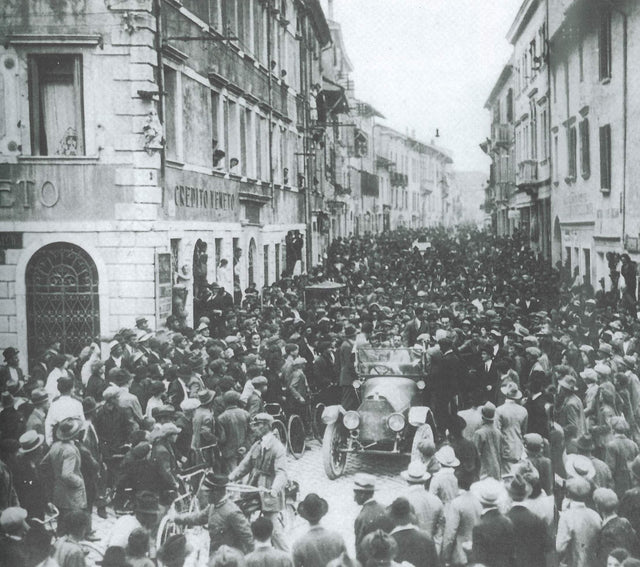
In June 1924, Bottecchia was in top shape, he pedaled without any effort on any slope, his breath was perfect, his morale was very high. The revelation athlete of the previous edition surprised all the participants, crossing the finish line first from the first stage, winning the much coveted maillot jaune. Read more about: “The Calvary of the Tour de France” There was no race that year nor history for anyone: Bottecchia put on the yellow jersey at the first stage and didn't take it off until Paris, crowning himself champion ahead of Frantz and establishing the record of being the first athlete to wear the yellow jersey of the Tour from first to last stage. On 22 July the front page of the Gazzetta dello Sport headlined in capital letters: "Bottecchia triumphantly wins the Tour of France and reaches the goal that the strongest Italian routers had been pursuing in vain for 20 years". Bottecchia is not only the first Italian to win the prestigious French competition, but also the first rider in the history of the Tour to have worn the yellow jersey from the first to the last stage. Not content, after the absolute triumph of 1924, he won the Tour de France also the following year, in 1925: at the end of the twentieth Tour de France, out of 130 riders only 49 returned to Parc des Princes. Wearing the yellow jersey since the first stage, Ottavio also climbs onto the first step of the podium in the 6th, 7th and final stages of the Tour, wearing the maillot from the ninth to the eighteenth stage. At the finish line in Paris, Ottavio wins, confirming his first place in the general classification from the previous year, ahead of Lucien Buysse, 54'20” behind, and Bartolomeo Aimo (56'17”). The welcome for Bottecchia was triumphant and Italian sport was resting on its laurels. The career and life of Ottavio Bottecchia died early, on 15 June 1927 in Gemona del Friuli, in the province of Udine, in a context over which the mystery. A strange accident, probably caused by a still unexplained illness, struck the 33-year-old Ottavio while he was walking along the familiar streets where he used to train and even today there is no certainty about it. What is certain is that a great champion passed away that day.
The career and life of Ottavio Bottecchia died soon, June 15, 1927 in Gemona del Friuli, in the province of Udine, in a context on which the mystery still hovers. A strange accident, probably caused by an illness still unexplained, struck the 33-year-old Ottavio as he walked the familiar streets where he used to train and even today there is no certainty about it. What is certain is that that day a great champion died.
BOTTECCHIA CENTENARY
1924-2024 Bottecchia Cicli celebrates the centenary of Ottavio Bottecchia’s first victory at the Tour de France. A hundred years later the bikes that bear his name continue to make cyclists dream of the world.
